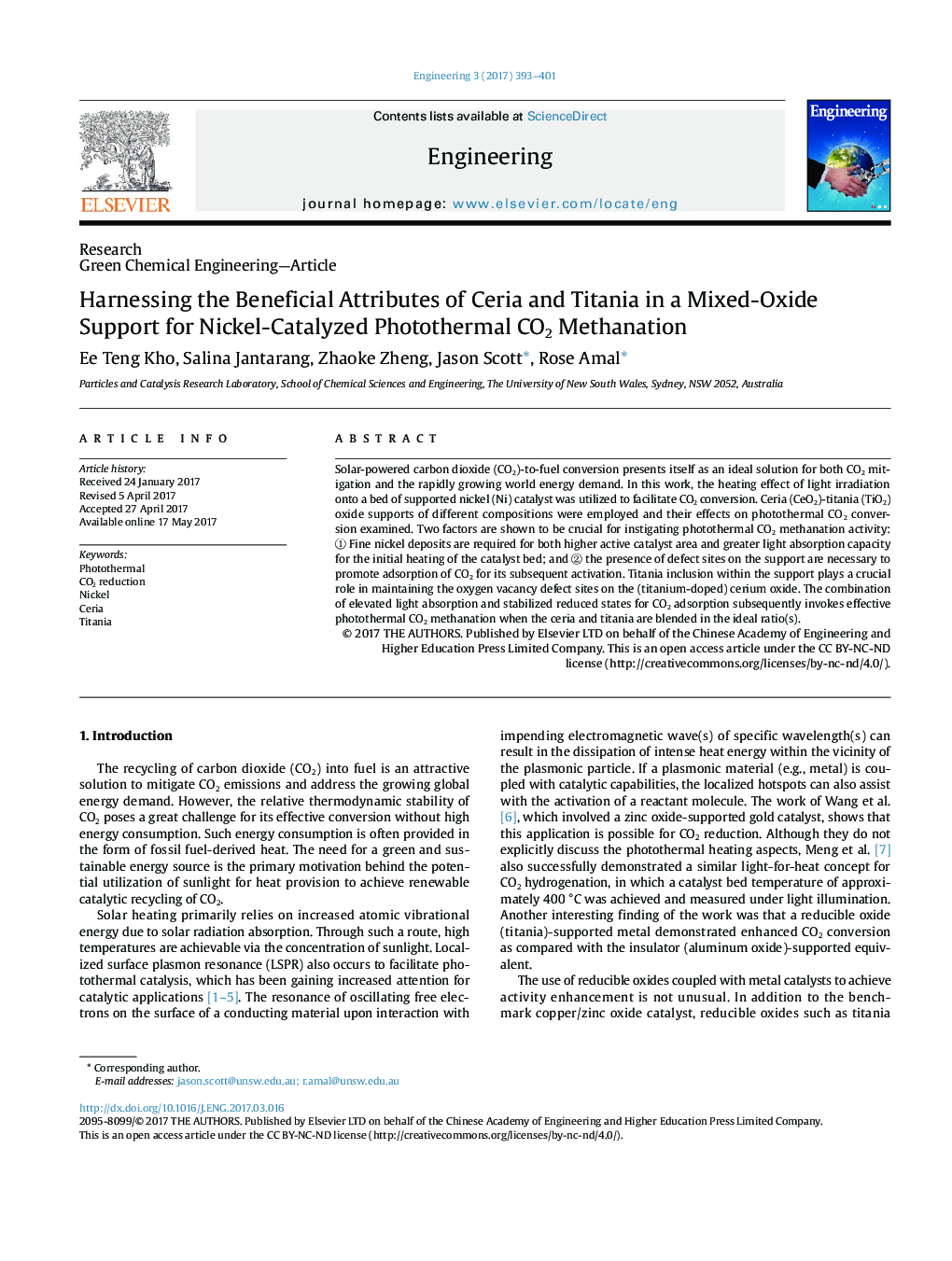| Article ID | Journal | Published Year | Pages | File Type |
|---|---|---|---|---|
| 6893538 | Engineering | 2017 | 9 Pages |
Abstract
Solar-powered carbon dioxide (CO2)-to-fuel conversion presents itself as an ideal solution for both CO2 mitigation and the rapidly growing world energy demand. In this work, the heating effect of light irradiation onto a bed of supported nickel (Ni) catalyst was utilized to facilitate CO2 conversion. Ceria (CeO2)-titania (TiO2) oxide supports of different compositions were employed and their effects on photothermal CO2 conversion examined. Two factors are shown to be crucial for instigating photothermal CO2 methanation activity: â Fine nickel deposits are required for both higher active catalyst area and greater light absorption capacity for the initial heating of the catalyst bed; and â¡ the presence of defect sites on the support are necessary to promote adsorption of CO2 for its subsequent activation. Titania inclusion within the support plays a crucial role in maintaining the oxygen vacancy defect sites on the (titanium-doped) cerium oxide. The combination of elevated light absorption and stabilized reduced states for CO2 adsorption subsequently invokes effective photothermal CO2 methanation when the ceria and titania are blended in the ideal ratio(s).
Related Topics
Physical Sciences and Engineering
Computer Science
Computer Science (General)
Authors
Ee Teng Kho, Salina Jantarang, Zhaoke Zheng, Jason Scott, Rose Amal,
